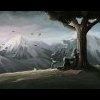Thoughts On 'the Great Turning'
-
Recently Browsing 0 members
- No registered users viewing this page.
-
Topics
-
-
Popular Contributors
-
-
Latest posts...
-
315
Report Fed-Up Nottingham Dad Moves Family to Thailand for New Life
Does it hell as. My sister just went to Warwick University. One of the top universities in the world. Thailand has nothing similar. Her whole feels were paid for with a grant. She will pay that grant back in the future when she gets a big job with a high salary. The cost is 10,000 per year, which is reasonable - when you compare how much Americans pay in their country. So that 10,000 is only paid back when she gets a top job with high income. If you live in Scotland it's free. -
30
Mexico protesters demand American tourists leave, attack cafes
It's an American term. Live and learn. -
37
Report Paetongtarn Shinawatra Vows to Restore Faith in Thai Buddhism
...Hundreds Of Billions Of Baht... (Or Was It Trillions)(?)...In The Coffers Of Certain Thai Temples... (?) ...Suddenly...The Newly 'Self-Appointed'... (?)...Culture Minister...(?) ...Will Take It Upon Herself To 'Save Buddhism'...(?) -
128
Bombshell: Obama & Crew knew all along, Russia Russia was a hoax.
Obama's Goin down.... and it ain't to funky town. Nope, he's headed to a max fed lockup. SOON -
95
-
14
Question regarding 90 days report
Said no one ever. I have not read a single report of anyone having an issue filing for an extension after getting a 2000 baht failure to file a 90 day report stamp. In fact I know several long stay foreigners here who never do 90-day reporting throughout the whole year, only pay a 2,000 fine and file one 90 day report just before they do their next yearly extension. I saw a passport that had page after page of failure to file 90 report fine stamps and immediately under it a new yearly extension stamp (at least 8 yearly extensions along with failure to file 2000 baht fine stamps) I stand by my statement: there are no negative implications for failing to file a 90-day report on time and paying the 2000 baht fine..
-
-
Popular in The Pub


.thumb.jpg.bc523c85a8d558dbc282dca7a2e602c9.jpg)

.thumb.jpeg.d2d19a66404642fd9ff62d6262fd153e.jpeg)




.thumb.jpg.b54783ad387f65d779e04f535fcfeee9.jpg)





Recommended Posts
Create an account or sign in to comment
You need to be a member in order to leave a comment
Create an account
Sign up for a new account in our community. It's easy!
Register a new accountSign in
Already have an account? Sign in here.
Sign In Now